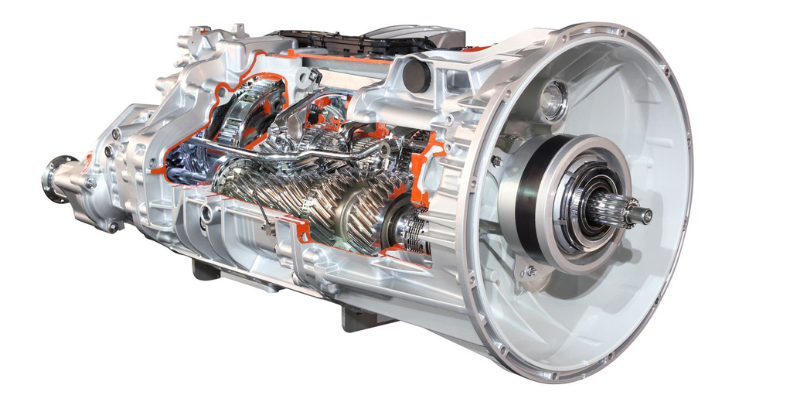7 Ways Innoslate Improves Systems Engineering
Many engineers outside of systems engineering often regard the field as “less rigorous” than their fields, since systems engineers usually don’t deal...
4 min read
SPEC Innovations Team
:
7/16/24 11:12 AM

Quality Assurance (QA) is a systematic process designed to ensure that products or services meet specific quality standards. It involves a set of activities and procedures designed to prevent defects or issues during the production or development process, rather than just identifying them after they occur.
Key Aspects of Quality Assurance
Preventive Focus: QA emphasizes preventing errors or defects through careful planning, documentation, and systematic processes.
Process-Oriented: QA is concerned with improving and managing the processes used to create products or deliver services. This includes defining clear procedures, standards, and guidelines that are consistently applied.
Standards and Compliance: QA often involves ensuring that products or services comply with established industry standards, regulations, or customer requirements.
Continuous Improvement: QA strives to continually improve processes through regular reviews, feedback, and iterative enhancements.
Verification and Validation: QA processes encompass various forms of testing, inspection, and review to ensure that processes are being followed correctly and that the end product meets the desired quality standards.
Documentation: Proper documentation is a crucial part of QA. It ensures that processes are repeatable, traceable, and auditable.
QA vs. Quality Control (QC):
Quality Assurance is proactive, focusing on process management to prevent defects.
Quality Control (QC) is a reactive process that focuses on identifying and correcting defects in the final product.
In systems engineering, including software development, QA is essential to ensure that the systems or software meet functional and non-functional requirements, are reliable, and meet customer expectations.
To gain insight into the significance of quality assurance in the requirements management phase of the lifecycle, let's delve into a case study comparing transmission quality between two rival automotive companies.
In the 80s, Ford owned roughly 25% of Mazda (then known as Toyo Kogyo) and had Mazda manufacture some automatic transmissions for cars sold in the United States. Both Ford and Mazda were building the same transmission off the exact specification, and both had 100% specification conformance.
However, the Ford transmissions were receiving more customer complaints about noise and were having higher warranty repair costs. This led Ford engineers to investigate, and they found that the Ford-manufactured transmissions utilized 70% of the available tolerance spread for manufactured parts. In comparison, Mazda used only 27% (AC 2012-4265: Promoting Awareness in Manufacturing Students of Key Concepts of Lean Design to Improve Manufacturing Quality). The Ford engineers then began to realize that the Mazda transmissions were of better quality than the Ford-manufactured ones. It turned out that Mazda was using a slightly more expensive grinding process than what Ford was using. This raised Mazda’s manufacturing costs; however, the full lifetime costs were higher for the Ford-manufactured transmissions.
This story is a prime example of why it is essential to consider quality control. Too often, we tend to focus on another metric and neglect quality, or we use a single metric to define quality. Ford experienced this by focusing on a “Zero Defect” policy, thinking that if there were zero defects in a transmission, it would produce a quality transmission. Mazda expanded on this policy, taking the whole lifecycle cost and experience into consideration as they developed their transmissions. With this holistic view, it is easy to see why engineers need to consider quality throughout a program’s lifecycle.
If the goal of an organization is to deliver a quality product, engineers at all stages must consider how they can enhance the quality of the system. An easy way to think about adding quality is to evaluate the extra details, effort, and care that can be put into the product. When these extra efforts are applied to a properly defined system, the output is often a quality system. To a program manager, all the extra effort sounds like a fair amount of additional cost. This is true; however, it is essential to consider the short-term cost increase in comparison to the potential long-term cost savings. Below are two examples of how to add quality in the lifecycle.
One of the first steps of the design effort is requirement management. Unfortunately, having a requirement like “the system shall be of a quality design” will not help instill quality assurance. Not only would this requirement violate good requirement writing, but it also fails to take into account the characteristics of a quality system. Is it the spare-no-expense engineering efforts of high-end audio systems, or is it the sound quality for the price factor of Japanese-manufactured cars in the 1970s? It is essential to identify how the customer and market define quality. Having this understanding informs choices going forward and prevents a scenario where the market doesn’t value the added quality efforts.
🔗Related Article: How to Write Good Requirements
The procurement/manufacturing phase of the lifecycle is where quality efforts are the most visible. As parts are being ordered, it is essential to consider how the entire supply chain approaches quality. This involves reviewing the supplier’s suppliers to verify that the parts being delivered are not of poor design, where a possible defect could be hidden through integration. For internally manufactured parts, is extra effort being added to check that the solder on pins is clean and will not short other sections under heating? Extra thought and care should also be given to the human interface of the system, as this typically plays a significant role in determining the overall quality of the system. For software, do user interfaces make sense, do they flow, are they visually appealing? These are the kinds of questions that should be asked during the requirements gathering phase to help guide engineers in building a quality system.
🔗 Related Article: 9 Methods to Gather Requirements
The Scott Adams’ Dilbert comic strip below showcases a perfect example of Pointy-Haired Boss directing Dilbert, Alice, and Wally to focus on quality.

DILBERT from Sunday March 28, 2004
What Pointy-Haired Boss fails to realize is that quality and the rest of his priorities are not mutually exclusive and can be done concurrently. A quality system is one that is safe, law-abiding, and financially viable. Quality should also be considered in these factors, ensuring that the additional design work is worthwhile. All of these factors, when properly combined with good design and engineering, produce a quality system.
Quality Assurance is not just a set of procedures but a philosophy that should be woven into every stage of a product's lifecycle. The examples from Mazda and Ford illustrate that quality goes beyond meeting specifications—it involves a holistic approach that considers long-term reliability, customer satisfaction, and overall lifecycle costs. By embedding quality into the design, procurement, manufacturing, and even the user experience, organizations can avoid costly defects and deliver superior products.
Incorporating quality from the outset may increase short-term costs. Still, the long-term benefits—such as reduced warranty claims, higher customer satisfaction, and lower total cost of ownership—make it a worthwhile investment. Engineers, managers, and all stakeholders must recognize that quality is not just another box to check; it's an integral part of delivering a successful product. When quality becomes a top priority, alongside safety, compliance, and cost, it leads to systems that not only meet but exceed expectations, ultimately defining the brand's reputation in the marketplace.
SPEC Innovations is dedicated to providing solutions to make it easier for all stakeholders to embed quality into their projects. Learn more about Innoslate's AI Quality Checker that makes it simple to meet INCOSE's Guide to Writing Requirements. Watch the webinar.
Have questions about model-based systems engineering or requirements management? Talk to an expert and see how Innoslate can streamline your projects from start to finish.

Many engineers outside of systems engineering often regard the field as “less rigorous” than their fields, since systems engineers usually don’t deal...

In today’s business landscape, organizations are constantly seeking a competitive edge that enhances their efficiency and quality to drive new...
.png)
If you don't feel like reading, feel free to watch the recording!